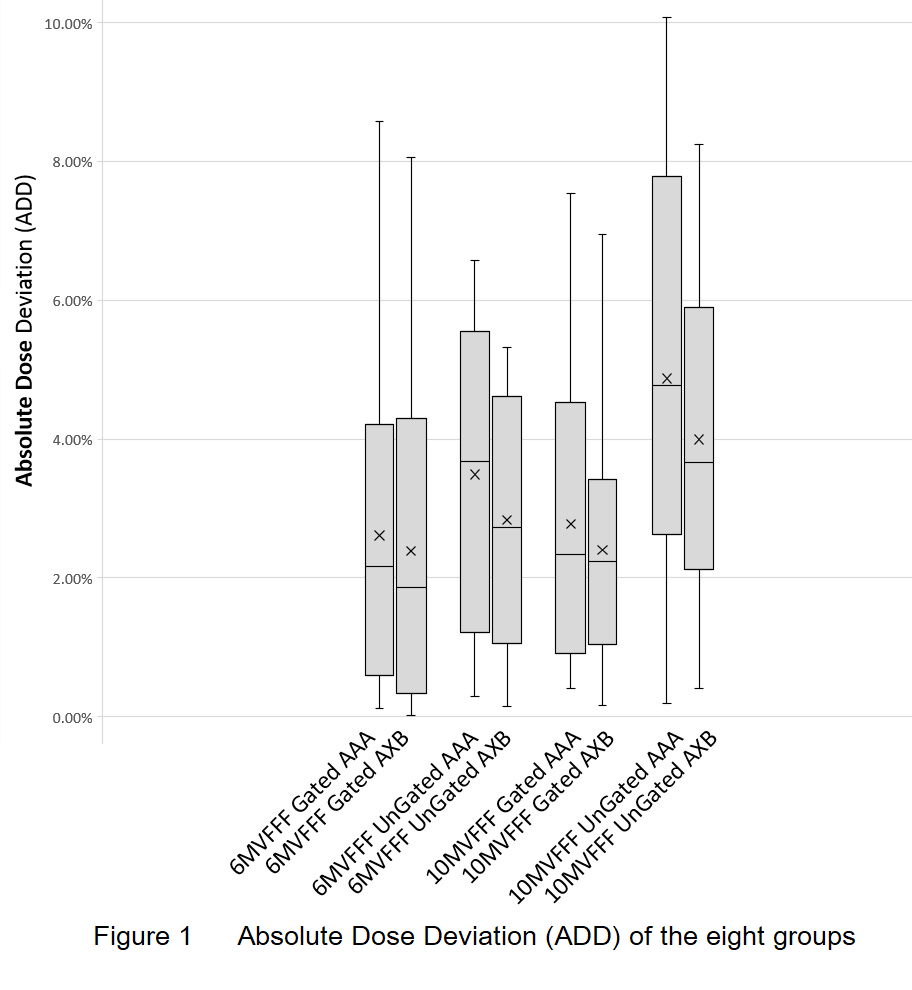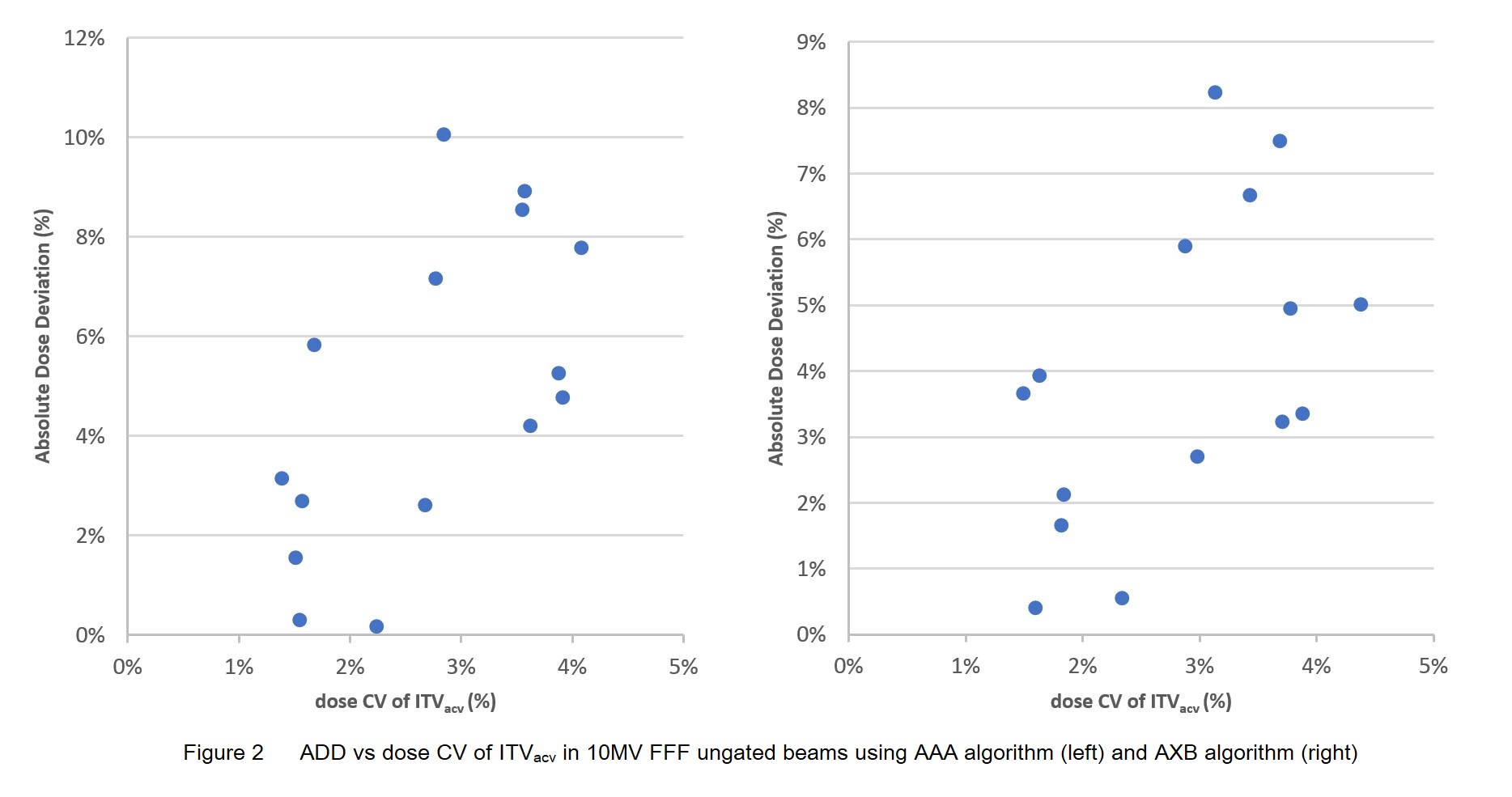Dosimetric comparison between gated and ungated SBRT plans using VMAT with FFF beams
Man Cheuk Ng,
China, Hong Kong Special Administrative Region
PO-1782
Abstract
Dosimetric comparison between gated and ungated SBRT plans using VMAT with FFF beams
Authors: Tik Yan Nam1, Qi Cheng Chen2, Man Cheuk Ng3
1St. Teresa's Hospital, Oncology Centre, Hong Kong, Hong Kong (SAR) China; 2The University of Hong Kong, Pokfulam, Department of Diagnostic Radiology and Clinical Oncology, Hong Kong, Hong Kong (SAR) China; 3The University of Hong Kong, Pokfulam, Department of Clinical Oncology, Hong Kong, Hong Kong (SAR) China
Show Affiliations
Hide Affiliations
Purpose or Objective
Repeated stop-and-go beams and the interplay effect that occurs during gated and ungated treatments can have an impact on dose accuracy. This study compared the dosimetric impact between gated and ungated SBRT plans using 6MV FFF and 10MV FFF and investigated any unexplored factors that would correlate with the dosimetric deviation. This study also explored if the stop-and-go effect would play a prominent role in the accuracy of gated radiotherapy by using the number of cycles of beam on-and-off (NCstop-and-go) to quantify the stop-and-go effect.
Material and Methods
Fifteen SBRT lung cases using 6MV FFF RapidArc beams with DRmax of 1400MU/min were chosen. The same plans were then re-optimized using 10MV FFF with a DRmax of 2400MU/min without significant plan complexity difference compared with 6MV FFF (p=0.699). These plans were then delivered by Varian TrueBeam linear accelerator and measured using the CIRS Dynamic Thorax Phantom and PTW 3D PinPoint detector. The target moved sinusoidally. The verification plan for each case was calculated on an average intensity projection computed tomography volume across all phases and across 40%-60% phases of the breathing cycle for the ungated and gated plans respectively. This study focused on the magnitude of the dose deviation i.e. the ADD, where it is defined as │measured dose – calculated dose│/ calculated dose. Wilcoxon signed-rank tests were performed on the ADD between gated and ungated cases. Correlation tests between ADD and the dose coefficient of variation (CV) amongst the voxels inside the internal target volume of the active volume of the chamber (ITVacv) were conducted. NCstop-and-go of the gated cases with the two energies were compared to study the contribution of the stop-and-go effect to the ADD.
Results
A significant difference was found on ADD between gated and ungated 10MV FFF with 2400MU/min DRmax (Wilcoxon signed-ank test; p≤0.015). However, this was not the case for the 6MV FFF with 1400MU/min DRmax (figure 1). It also revealed that there were significant correlation coefficients r of 0.5947 (AAA) and 0.5470 (AXB) between the ungated 10MV FFF ADD and the dose CV among the voxels inside ITVacv (figure 2). Significant differences in NCstop-and-go were observed in gated cases between the two energies with different DRmax but it showed no significant difference in the ADD.


Conclusion
This study found that the interplay effect had a statistically significant adverse dosimetric impact for 10MV FFF ungated SBRT due to the high DRmax 2400MU/min. This adverse impact on ADD could be decreased by using a target dose with reduced dose inhomogeneity due to the significant correlation found between ADD and dose CV of ITVacv. On the other hand, the stop-and-go effect showed no significant effect on the ADD. To conclude, the interplay effect outweighed the stop-and-go effect for the TrueBeam linear accelerator.